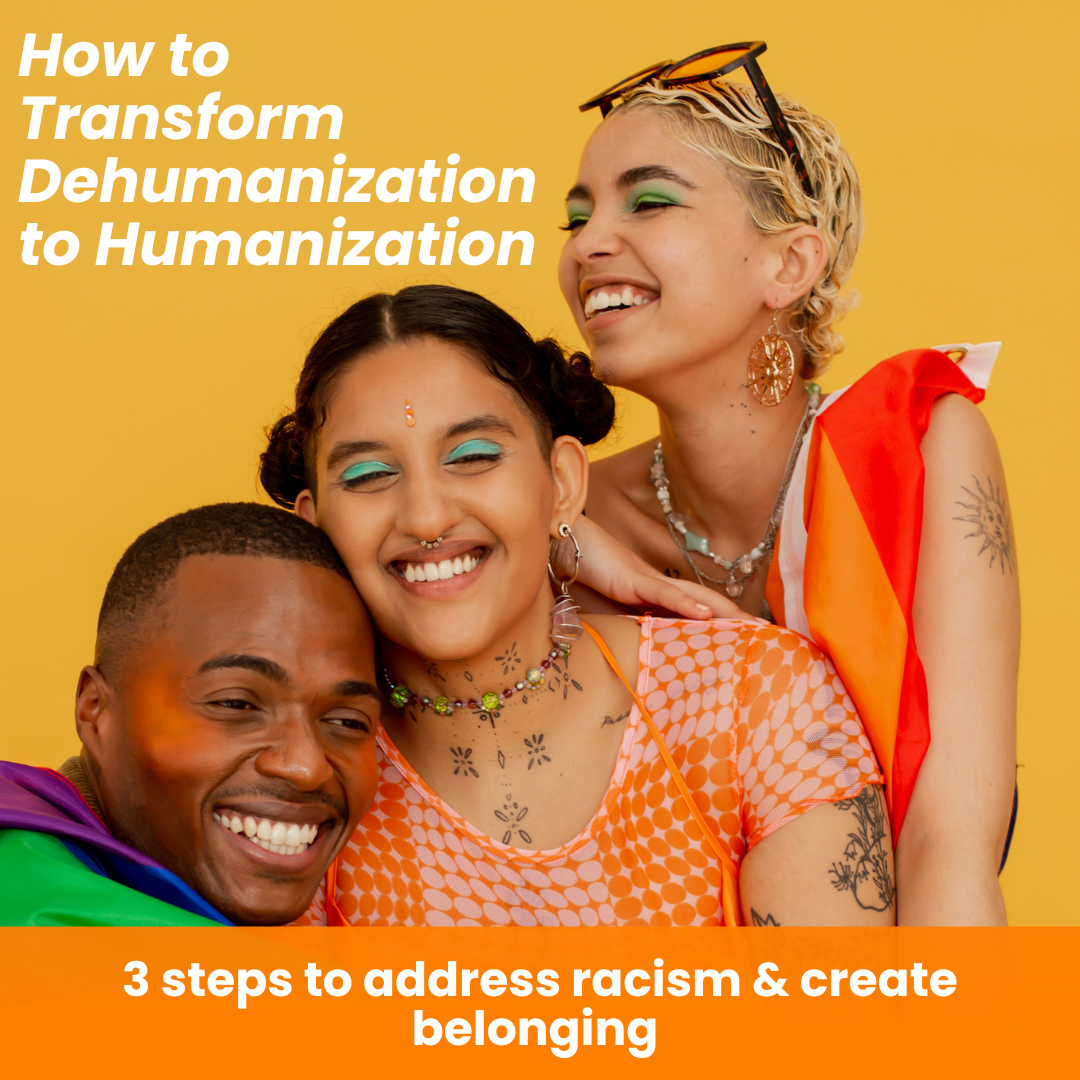How Does it Begin?
Dehumanization starts inconspicuously.
It starts with a disagreement on what people believe is true and what is fact.
For example, there’s a common disagreement about MERITOCRACY.
“Meritocracy allows for equal opportunity” vs. “Meritocracy contributes to increasing inequality.”
Regardless of the opinion, a slippery slope to dehumanization starts with either party’s inability to feel acknowledged and taken seriously about their position. That’s the foundation.
Next, regardless of how each party is treated, they feel ridiculed and blamed when expressing their point based on their lived experience. This step is the scaffolding to support what leads to dehumanization.
Next is the name-calling followed by harassment. These are the walls and insulation.
Finally, the completed structure is HATRED – Actions, words, and behaviours that expose a targeted person or target group to detestation and vilification to delegitimize them and make them unacceptable in society due to their identity.
Voila! You’ve initiated the process of dehumanization defined by Dr. M. Maiese as: “demonizing the enemy, making them seem less than human and hence not worthy of humane treatment.”
How Do We Humanize?
1. Be Curious About Context
When we’re dehumanized, it’s tempting to dehumanize.
Instead, get curious about the person you disagree with.
Understand their context.
What was their lived experience? A middle to upper-class experience? With a straight journey from elementary school to high school to university?
A poor neighbourhood with working-class folk where every family member ensured the necessities were met?
Is it more complicated than that?
Learn why they have the perspective they do.
What informs people’s opinions? Their history? Their relationships? Violence? A peaceful life?
Their answers may surprise you, and in spite of yourself, you might realize you have more in common with them including shared fears.
Understanding the context doesn’t excuse dehumanization. It can however, allay underlying fears of people you disagree with and that can bring about the conditions for humanization.
2. Check Unconscious Bias
We all have unconscious bias. It’s the short-cut your brain creates to manage a massive amount of input it receives.
Unconscious bias influences attitudes, perceptions, feelings and stereotypes that you unconsciously attributes to another person or group of people.
Structural colonization influences this bias. So, check it.
Ask yourself: How does my unconscious bias influence my opinion of the person I disagree with the most?
Use the answer to eliminate biases including racial bias.
3. Create Psychological Safety
We all want to feel safe.
To feel that way, we must uncover and understand fears.
To do that, we need create the conditions for people to raise concerns like:
“If we give preferential treatment to IBPOC and other marginalized people, what happens to us? Are we out of a job? Do we lose our benefits? Does our cost of living increase?”
It means giving them the space to share such concerns without them feeling embarrassed, rejected, or shut down.
We need to create the conditions for psychological safety that we want to experience ourselves.
We need to listen to these fears and take them seriously – especially from those who dehumanize us.
It’s hard not to vilify those who wish to or do harm you.
It’s asking a lot to humanize those who dehumanize you.
AND, if we want address racism and feel like we all belong, we need to build our capacity to deal with difficult emotions like fear – ours and theirs – while striving for accountability and transparency.
So, how do we transform dehumanization to humanization?
- Practice curiosity to understand the context for a person’s opinion you disagree with.
- Check your unconscious bias.
- Create psychological safety.
- Take shared fears seriously.
That’s the starting point. Want to build on this?
Read: How to Disagree and Why Good Intentions Can Reinforce Racism and Hate.

Coaching and Training Help
P.S. Need more help? Sign up for a free needs assessment chat for leadership coaching here.
P.P.S. Want to build your leadership team’s capacity to deal with difficult emotions and mindfully communicate to have a workplace where everyone can belong? Sign up for a chat here, and let’s talk about your training or consulting needs.

